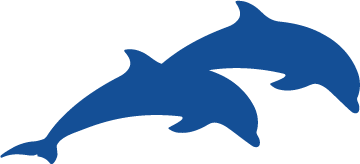Marevivo, Ispra, Castalia, and CoNISMa join forces to protect marine ecosystems.
As part of the PNRR MER (Marine Ecosystem Restoration), the largest marine project within the National Recovery and Resilience Plan (PNRR), managed by the Ministry of Environment and Energy Security, the “GhostNets” project has recently launched. This initiative aims to restore 20 areas where abandoned fishing gear and/or aquaculture equipment have been detected, in order to preserve local flora and fauna. Thanks to the collaboration of various key players – Marevivo Foundation, ISPRA, Castalia Consorzio Stabile, CoNISMa, and the National Inter-University Consortium for Marine Sciences – who have come together to recover abandoned or accidentally lost fishing nets and gear in the sea, it will be possible to begin restoration and protection efforts for the seabeds and habitats of Italy’s territorial waters. The goal of the project is to allow for the recolonization of these areas through a shared effort, with the added value of the on-the-ground experience and scientific knowledge of the involved parties.
The first operations were launched in Sicily, between Augusta and Syracuse, and have led to the recovery of various types of nets – trawl, drift, tangled ropes, longlines, and pots – over 30 ghost nets, some as long as 260 meters (roughly the height of a 100-story skyscraper), at depths of 40-60 meters, after inspecting 60,000 square meters of seabed. Many marine species were finally freed after being trapped. The most threatened species include Posidonia oceanica, which suffers physical damage such as shading and abrasion; coralligenous habitats, which are torn, broken, and abraded, suffering severe repercussions; and mobile marine fauna, which gets trapped or injured by the nets, which continue to capture even after losing control. This is a significant damage to the marine ecosystem, which can now finally “breathe.”
“This recovery campaign is a major step forward for the protection of our seas,” explain ISPRA researchers, “but it is crucial to raise awareness among industry operators and continue investing in technologies and prevention policies.” All of this has been made possible by Law 60/2022, “Salvamare,” strongly supported by Marevivo, which classifies abandoned and recovered nets as urban waste to be recycled or disposed of.
The project also includes two case studies, one in the Mar Piccolo of Taranto and the other in the Gaiola Marine Protected Area, which will conclude in June 2026 with a report on the impact of fishing gear on natural habitats. New guidelines for removal operations will also be developed, and an experiment will be carried out on a sample of recovered nets to assess their recycling potential in a circular economy context, as there is currently no efficient way to dispose of nets from the seabed.

Every year, around 100,000 mammals and one million seabirds die due to entanglement in fishing nets or after ingesting the fragments that are released into the sea. Data from the Higher Institute for Environmental Protection and Research (ISPRA) are clear, showing that 86.5% of marine waste is linked to fishing activities, and 94% of this waste consists of abandoned nets.
“Among marine debris, abandoned nets represent one of the most dangerous threats to the ecosystem, as they settle on the seabed, becoming deadly traps for many species, which risk suffocating or getting trapped,” says Raffaella Giugni, Secretary General of Marevivo. “Their degradation into tiny fragments also generates the release of microplastics, which are ingested by animals and consequently end up in the food chain. This is why for the past thirty years, Marevivo has been promoting activities to recover anthropogenic waste and fishing gear, working closely with law enforcement and various scientific partners. In recent years alone, we have recovered over 12,000 meters of abandoned nets.”
After removal from the seabed, it is essential to ensure that the nets are somehow directed towards recovery, as much as possible, and do not end up returning to the environment in another form. “We work to maximize the recovery of materials such as nylon or plastic fibers, as well as metals contained in the nets,” says Massimiliano Falleri, Head of the Subaquatic Division at Marevivo. “It is also important to assess how much the long exposure to the sea has compromised their recycling potential, but unfortunately, this can only be determined at the moment, as it depends on many factors.”
The next operations of the “GhostNets” project will be carried out in Puglia, Campania, Lazio, Marche, Emilia-Romagna, Tuscany, Liguria, and Veneto.






